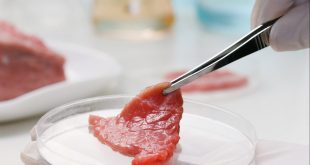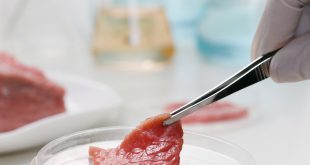By Carol T Culhane, PHEc, MBA; President, International Food Focus Ltd.
If all goes according to plan, by October 17, Canada will have federal regulations which enable the sale of edible cannabis products.The federal government’s steadfast adherence to its roll-out of legalized cannabis in many forms illustrates its commitment to the three-pronged aim of this new legislation, which are to:
- keep cannabis out of the hands of youth
- keep profits out of the pockets of criminals
- protect public health and safety by allowing adults access to legal cannabis
The edible cannabis regulations are secondary in succession to the recreational cannabis regulations; however, they are equally important to achieving the official goals of the program. A 2016 U.S. study reported that 29 percent of recreational cannabis users had consumed the edible form; in addition, 11 to 26 percent of medical marijuana users, in selected U.S. states and in Canada, had consumed an edible cannabis product at least once. In 2014, in Colorado, where edible cannabis products are legally sold, edible retail cannabis-infused products accounted for 45 percent of annual cannabis sales. Since the broad range of cannabis products sold in Colorado will not be legalized in Canada, one cannot extrapolate the proportion of edible cannabis sales onto the Canadian market. One can safely project, however, that edible cannabis will have a significant reach in Canada and be of interest to approximately 30 percent of cannabis users.
The appeal of edible cannabis is tangible. Although no clinical trials on the therapeutic efficacy of cannabis are known to have been conducted to date, anecdotal evidence indicates that cannabis can be an effective pain-management tool for some sufferers of a wide range of muscular aches and pains, ranging from those which are the result of accidents to that which accompanies crippling diseases. To this end, the Multiple Sclerosis Society of Canada has partnered with the Canadian Institute of Health Research (CIHR) in a pledge of $1.5 million to investigate how cannabis can manage MS symptoms and its effect on the disease.
Edible cannabis offers users several advantages. The orally ingested variant is physiologically safer than the vaped or smoked variants. A user need not smoke or learn to smoke to acquire the cannabis benefits. Finally, edible cannabis products can be discretely consumed anywhere and everywhere, void of the blue-smoke tell-tale and pungent, characteristic odour.
The challenges facing an edible cannabis retail market in Canada are many. The label of an edible cannabis product needs to declare the amount of psychoactive component THC (tetrahydrocannabinol) and the amount of non-psychoactive component CBD (cannabidiol) per package, or per unit in the package. The primary challenge is standardization of the amount of these ingredients per unit of sale. The proposed regulations specify an upper limit of 10 mg THC per “package.” Said package could consist of 10 individual units having 1 mg THC each, or one unit having 10 mg THC. A minimum amount of THC per package is not proposed, and most likely will not be for some time to come. This is because the minimum efficacious amount for the average adult is not known to anyone, including the regulator. As stated by Keith Woelfel of Colorado’s Stillwater Brands, “Accurate THC edible dosing is as difficult as it is important, wherein the difference between 5 mg and 10 mg can be one of feeling better and feeling useless.”
Further, even a 5 mg dose may be excessive for some users, given individual metabolic differences. Thus, accurate dosing is essential, not only to remain under the 10 mg THC per package limit and to substantiate the mandatory CBD/THC content declared on the product label, but moreover, to allow users to confidently consume the amount of THC which is appropriate to their needs.
Secondly, cannabis oil, as the critical intermediate step to the production of edible cannabis products, is the pathway to THC dose standardization. The formula for any one of the edible cannabis products proposed by the federal government (herbal teas, non-alcoholic beverages, baked goods, confectionery items, etc.) will include incorporation and calibration of the “secret sauce” – the THC-standardized cannabis oil.
While the ways and means of making cannabis oil have been known to edible cannabis bakers for 50 years or more, the standardization of the amount of CBD/THC in cannabis oil has either escaped the controls of these artisans, or never crossed their minds. To date, the cannabis-producing sector is yet able to standardize, in both bench and scaled-up proportions, cannabis oil with a reliable and consistent proportion of CBD/THC. Familiar to the food manufacturing sector, is the potential effect of processing (baking, extrusion, pasteurization, etc.) on the level and efficacy of THC in the final product. If examination indicates that the level of THC is compromised by any one means of processing, the degree of loss must be verified and overages added to the formula to meet targeted CBD/THC content declarations.
These are only some of the challenges facing this emerging sector in the Canadian food manufacturing space. We will provide updates as more details are available, particularly once the regulations are finalized. There is an inherent opportunity for one or more entrepreneurial food manufacturers who are prepared to weather the highs and lows, much less the costs, of bench-level research, and who are open to partnering with other trailblazing entities, such as Multiple Sclerosis Canada and the CIHR. Why not pick up the phone and give them a call?
 Canadian Food Business
Canadian Food Business




